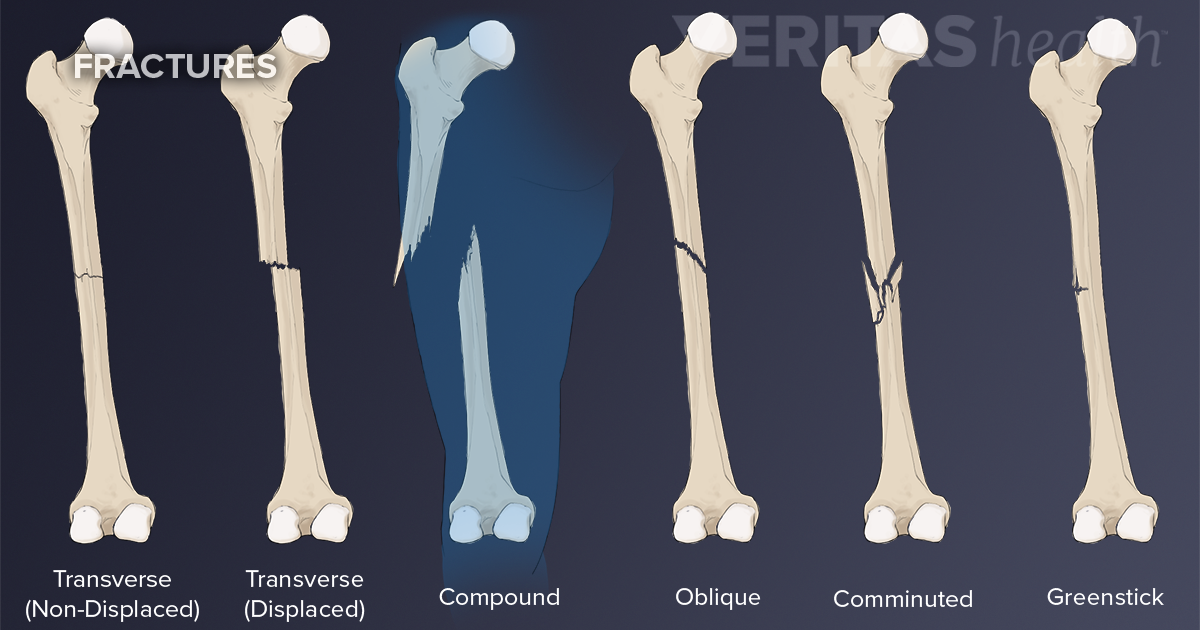


This is usually caused by too much form, and the break tends to be on the inside edge of the bone. Buckle Fracture- Like greensticks, buckles are incomplete fractures.The broken part is on the outside of the bone. This happens most commonly when an arm or leg is bent. Greenstick- A greenstick fracture is an incomplete fracture on one side of a bone.Several types of fractures almost exclusively affect children. At UVA Health, we have a hand center to help with recovery from hand injuries, including fractures. Hand fractures, for example, often require seeing a hand specialist. Broken legs, broken toes, and broken wrists are all pretty self-explanatory.ĭepending on the location of your fracture, you might see a specialist. This is the most common way to describe an injury. The third way of “typing” fractures is by which bone they affected. Stress - A thin fracture line occurs due to overuse rather than a single traumatic incident.Spiral - The line of the fracture forms a spiral.Oblique - The bone is broken at an angle.Transverse - The bone is broken straight across.Intra-articular - A break that’s across multiple bones on a joint.Comminuted - A bone that’s been broken in at least two (but possibly more) places.Compression - The bone is compressed together, like the bones in your spine.Chip (avulsion fracture) - A small piece of bone is broken away from the main bone and usually attached to a ligament or tendon.You can also describe fractures in terms of what they’ve done to the bone. They also are more likely to cause complications like serious bleeding. These breaks tend to be more complex and are more likely to require surgery.
Open vs closed fracture skin#
Compound vs Simple Fractureįractures that break the skin are called “compound” fractures. These types are related to how stable the break is, where the break is, and how the bone is broken. Some medications, like aspirin, can cause problems with some fractures. It’s important to listen to their recommendations.
Open vs closed fracture how to#
Your doctor will talk to you about how to treat your pain with medication. Medicationīroken bones can be intensely painful. Surgery for Broken Bonesįor breaks where the bone has separated, your doctor may need to operate and use pins, plates, or screws to hold the pieces of bone together till they can heal. Slings, boots, and other supportive devices can help provide comfort and mobility during the healing period. For a simple toe fracture, buddy-taping might be all that’s needed. Supports can take a variety of different forms depending on where your break occurred and how serious it is. Supports for Healingįor most simple fractures, support, like a cast, can keep the bone in place while the injury heals. These imaging types will also help rule out other complications. If your break happened because of serious trauma, like a car accident, then additional imaging may be necessary. These show the exact location of the break and make sure there aren’t other injuries. Imagingįor most fractures, doctors will request x-rays. Closed fractures might require imaging or additional evaluations.

Open fractures, where the bone breaks the skin, are quickly diagnosed.

Getting Treatment for a Broken Bone at UVA Healthĭepending on the type of fracture you have, it might be immediately obvious or require diagnostics. There are many different types of breaks, each requiring different treatment options. Fortunately, with the correct care, most people recover fully. Fractures are scary, painful, and can make it difficult to go about your normal life. It is appropriate to use initial evaluation and treatment suffix “A” when the patient has been transferred from another facility to a higher level trauma facility for active management of the fracture.įor additional information on ICD-10 coding for emergency medicine, visit the ACEP Reimbursement page.When you have an accident and suddenly experience pain, it might be due to a break, or fracture. Initial care 7 th character codes “A” (closed fracture) or “B” (open fracture Gustilo Type I or II, or unspecified) or “C” (open fracture Gustilo Type IIIA, IIIB, or IIIC) indicate the patient is receiving active treatment for the fracture.


 0 kommentar(er)
0 kommentar(er)
